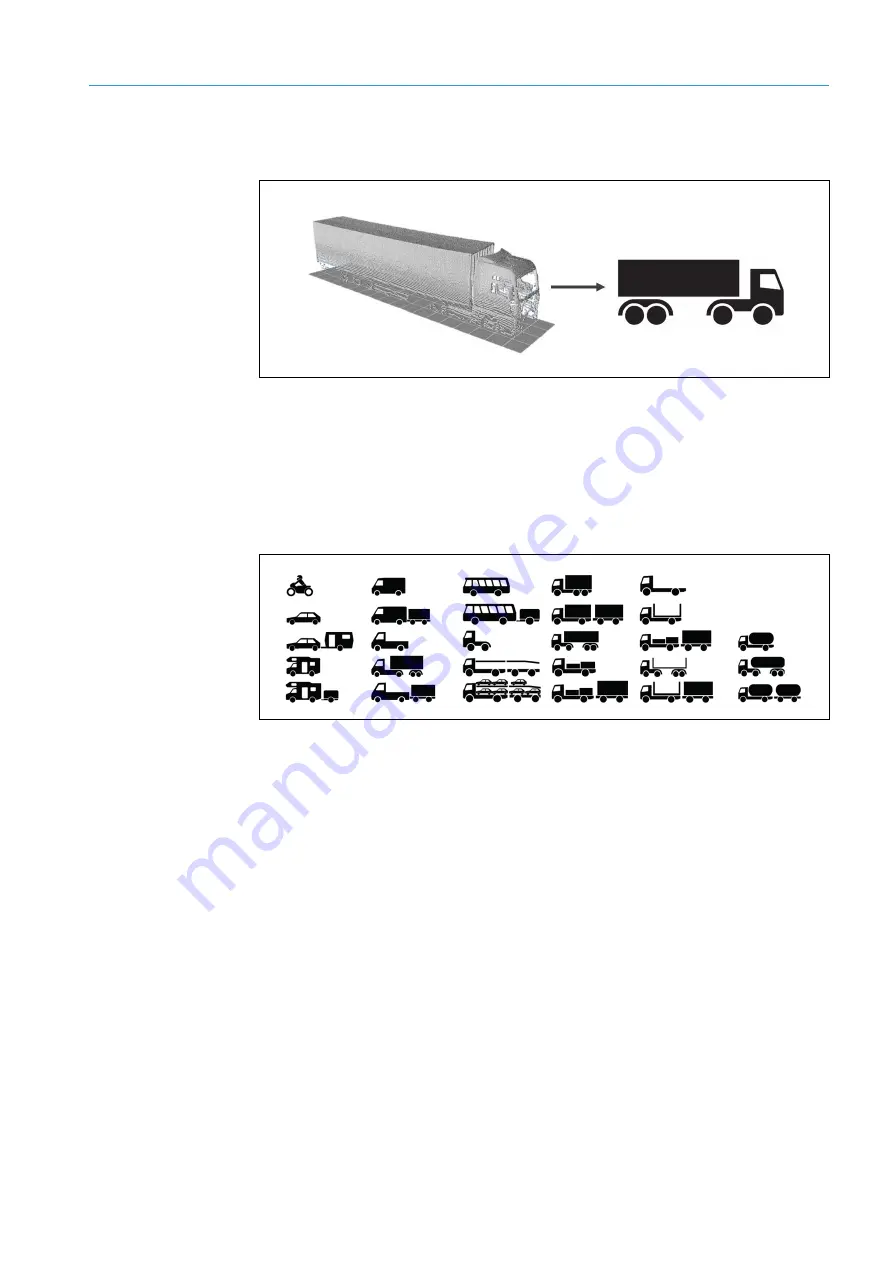
SYSTEM DESCRIPTION
3
29
8020776/12AX / 2019-05-31|SICK
Subject to change without notice
O P E R A T I N G I N S T R U C T I O N S |Free Flow Profiler
3.3.3
Operating principle of the vehicle classification function
The vehicle class is calculated on the basis of the 3D point cloud.
Fig. 18: Operating principle of vehicle classification
The classification criteria are defined by the choice of category system. The category
system depends on the local conditions that apply in the country where the profiling
system is being used.
Europe uses a detailed category system with 28 vehicle classes. Vehicles are identified by
comparing them against the vehicle classes. The class representing the closest match is
allocated to the vehicle.
Fig. 19: Vehicle classes in the European category system
The categories can be grouped together into various
output category systems
, such as
Swiss10
with 10 categories,
TLS 8+1
with 8 categories,
TLS 5+1
with 5 categories, and
TLS 2+0
with 2 categories. Other groupings are also possible.
With the
output category system
, vehicles are no longer identified on the basis of the
individual vehicle classes within the category system. Instead, they are identified on the
basis of classification groups. For example, the
TLS 2+0
output category system includes
two classification groups:
Car or similar
and
Truck or similar
.
Vehicles are classified on the basis of the 3D point cloud without considering the total
permissible weight.
Extreme weather such as heavy rain or snowstorms may affect the accuracy of output
data.
Notes
















































